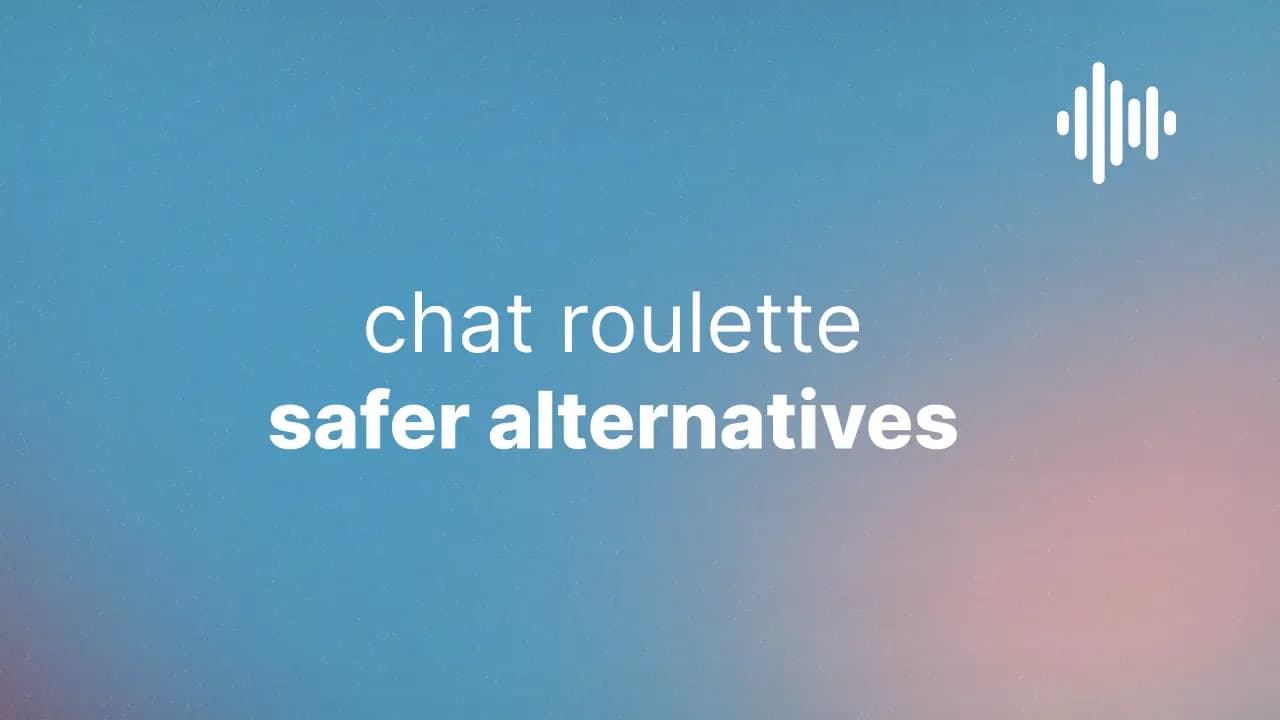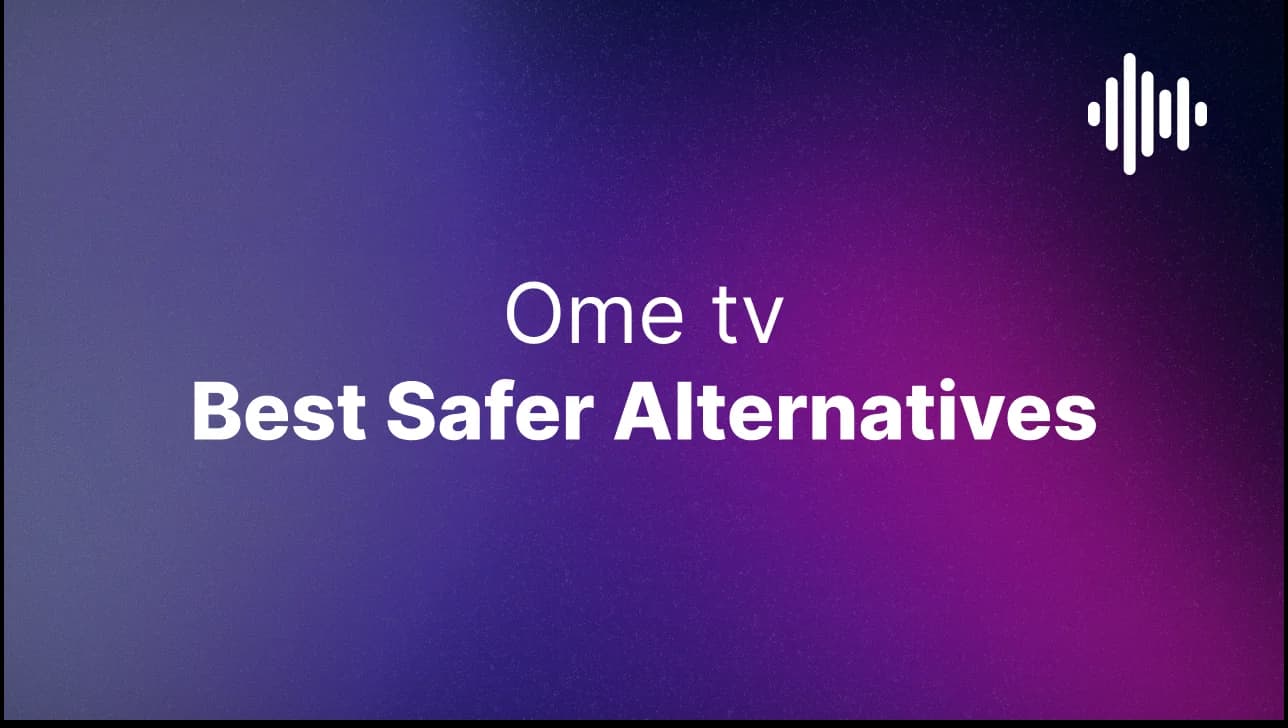Summary
Voice chat and traditional chatrooms might sound like two sides of the same coin since both let people connect online. Yet the difference between them is dramatic. Voice chat delivers a level of emotional depth and nuance that text can't match and studies show that vocal communication transmits far more emotional information than written words alone. Most people assume typing is easier and safer online but the real surprise is how speaking out loud builds trust, empathy, and a sense of real connection faster than any string of texts ever could. Once you experience the rush and authenticity of live conversation, it changes how you think about every message you send.
Voice chat and traditional chatrooms might sound like two sides of the same coin since both let people connect online. Yet the difference between them is dramatic. Voice chat delivers a level of emotional depth and nuance that text can't match and studies show that vocal communication transmits far more emotional information than written words alone. Most people assume typing is easier and safer online but the real surprise is how speaking out loud builds trust, empathy, and a sense of real connection faster than any string of texts ever could. Once you experience the rush and authenticity of live conversation, it changes how you think about every message you send.
Table of Contents
- Defining Voice Chat And Traditional Chatrooms
- The Communication Transformation
- The Importance Of Communication Methods In Social Interactions
- How Voice Chat Enhances Communication Experience
- Comparing User Experiences: Voice Chat Vs Traditional Chatrooms
- The Future Of Online Communication: Trends And Predictions
- Quick Summary
Defining Voice Chat and Traditional Chatrooms
In the digital communication landscape, voice chat and traditional chatrooms represent two distinct approaches to online social interaction. Understanding the nuanced differences between these platforms reveals how technology shapes our communication experiences.
What Are Traditional Chatrooms?
Traditional chatrooms are text-based digital spaces where users communicate by typing messages in real time. These platforms emerged in the early days of internet communication, allowing people to interact through written exchanges across various topics and interests. Characteristics of traditional chatrooms include:
- Purely text-driven communication
- Organized by specific themes or interest groups
- Often anonymous or pseudonymous interactions
- Limited emotional expression through text
Users typically join these spaces to discuss shared interests, seek information, or connect with strangers worldwide. The primary limitation is the absence of vocal or visual communication cues.
Understanding Voice Chat Platforms
Voice chat platforms represent a more dynamic evolution of online communication. These spaces enable real-time spoken interaction, allowing users to communicate through audio, capturing tone, emotion, and nuance that text cannot convey. Key features include:
- Direct audio communication
- Instant emotional and contextual understanding
- More natural conversational flow
- Reduced communication barriers
The Communication Transformation
The shift from traditional chatrooms to voice chat reflects broader technological advancements in how humans connect online. While text-based platforms provided initial digital social spaces, voice chat offers a more authentic and immediate interaction model. Learn more about modern voice connection strategies.
As digital communication continues to evolve, voice chat represents a more human-centric approach to online socializing, bridging gaps that text-only platforms cannot overcome.
To clarify the distinctions between voice chat and traditional chatrooms, the following table compares key features of each communication method.
| Feature / Aspect | Voice Chat | Traditional Chatrooms |
|---|---|---|
| Communication Mode | Real-time spoken audio | Text-based messaging |
| Emotional Expression | Captures tone, pitch, and inflection | Limited to written words/emojis |
| Anonymity Level | Lower, identity can be inferred from voice | Higher, often fully anonymous |
| Speed of Interaction | Immediate, conversational flow | Dependent on typing speed |
| Cognitive Engagement | Higher attentiveness and retention | Can be more passive |
| Authenticity of Connection | More authentic and empathetic | Potential for misunderstandings |
| Barriers to Entry | Requires microphone and suitable environment | Only requires typing ability |
The Importance of Communication Methods in Social Interactions
Communication methods significantly impact how humans connect, understand each other, and build relationships. Research from UC Berkeley reveals that the medium of communication profoundly influences emotional connection and social bonding.
Emotional Depth and Connection
Different communication methods provide varying levels of emotional richness and interpersonal understanding. Text-based interactions offer convenience but often lack the nuanced emotional transmission that voice communication provides. Vocal communication carries critical emotional subtleties such as:
- Tone variations indicating mood
- Emotional inflections expressing underlying feelings
- Instantaneous empathy transmission
- Authentic reaction capture
These vocal elements create a more profound connection between participants, enabling deeper mutual understanding beyond mere information exchange.
Cognitive Engagement and Learning
Voice communication stimulates higher cognitive engagement compared to text-based interactions. Educational research demonstrates that audio interactions promote more active listening and comprehensive comprehension. Key cognitive benefits include:
- Enhanced attentiveness
- Improved information retention
- More dynamic conversational participation
- Reduced misinterpretation risks
Social Interaction Dynamics
The choice of communication method fundamentally reshapes social interaction dynamics. Voice communication introduces spontaneity, immediacy, and authenticity that text-based platforms struggle to replicate. Explore our approach to modern voice connections.
Ultimately, communication methods are not just technological tools but sophisticated social interfaces that define how humans perceive, interact with, and understand one another in an increasingly digital world.
This table outlines the main ways different communication methods impact social interactions, cognitive engagement, and relationship building online.
| Communication Method | Emotional Depth | Cognitive Engagement | Social Dynamics |
|---|---|---|---|
| Voice Chat | High – conveys tone and nuance | Increased attentiveness and retention | Spontaneity and real-time feedback |
| Traditional Chatroom | Limited – lacks vocal subtlety | Can be passive, less retention | Delayed, less authentic interactions |
How Voice Chat Enhances Communication Experience
Voice chat transcends traditional communication boundaries by introducing a more nuanced and emotionally rich interaction model. According to research from the National Center for Biotechnology Information, voice communication provides continuous auditory presence that significantly transforms social interactions.
Emotional Intelligence and Nonverbal Cues
Voice communication enables a deeper transmission of emotional context through subtle vocal characteristics that text cannot capture. These nuanced elements include:
- Tone variations revealing underlying emotions
- Vocal pitch indicating psychological state
- Conversational rhythm expressing comfort levels
- Micro-inflections signaling unspoken sentiments
These auditory signals allow participants to perceive emotional subtleties, creating a more authentic and empathetic communication environment.
Cognitive Engagement and Communication Richness
Unlike text-based interactions, voice chat stimulates higher cognitive processing and engagement. The immediate, dynamic nature of audio communication encourages more spontaneous and genuine exchanges. Key advantages include:
- Faster information exchange
- More natural conversational flow
- Reduced communication misunderstandings
- Enhanced listener comprehension
Breaking Digital Communication Barriers
Voice chat represents a significant evolution in online social interaction, bridging technological distance with human connection. Discover our innovative approach to voice-based connections.
By prioritizing vocal communication, digital platforms can create more meaningful, contextually rich interactions that mirror the depth of real-world conversations.
Comparing User Experiences: Voice Chat vs Traditional Chatrooms
Research from the Pew Research Center reveals fundamental differences in how users interact across various communication platforms. The user experience varies dramatically between voice chat and traditional text-based chatrooms.
Interaction Quality and Depth
The core distinction lies in the richness of communication experience. Traditional chatrooms rely on typed exchanges, which inherently limit emotional transmission and spontaneity. Voice chat, conversely, introduces a multi-dimensional interaction environment where participants can:
- Hear authentic vocal tones
- Experience immediate emotional context
- Respond with natural conversational rhythms
- Detect subtle communication nuances
This dynamic creates a more genuine and connected social interaction that text-based platforms struggle to replicate.
Psychological Safety and Comfort
User comfort significantly differs between voice and text communication channels. Text chatrooms provide anonymity through written messages, while voice chat introduces a more vulnerable yet potentially more authentic interaction model. Key psychological considerations include:
- Reduced communication barriers
- Enhanced empathy through vocal cues
- More immediate social feedback
- Greater accountability in conversations
Technology and User Engagement
Modern communication platforms recognize the evolving user preferences. Explore our approach to reimagining online connections, where technology serves human connection rather than restricting it.
Ultimately, the choice between voice chat and traditional chatrooms reflects individual preferences, technological comfort, and desired social interaction depth.
The Future of Online Communication: Trends and Predictions
Research during the COVID-19 pandemic highlights dramatic shifts in digital communication methods, signaling transformative changes in how humans connect online. The landscape of communication is evolving rapidly, driven by technological innovations and changing social dynamics.
Technological Convergence and Communication
The future of online communication will likely blend multiple interaction modalities, creating more holistic and immersive experiences. Emerging trends suggest a move towards more nuanced, context-rich communication platforms that prioritize:
- Emotional intelligence integration
- Real-time language translation
- Adaptive communication interfaces
- Seamless multi-modal interactions
These advancements promise to break down traditional communication barriers, enabling more authentic and meaningful digital connections.
User Preference and Behavioral Shifts
Modern communication platforms are witnessing significant user behavior transformations. Voice-based interactions are gaining prominence, challenging the text-dominated digital communication model. Key indicators of this shift include:
- Growing preference for immediate, context-rich communication
- Increased comfort with audio interactions
- Desire for more genuine online connections
- Reduced tolerance for impersonal digital exchanges
Emerging Communication Paradigms
As digital platforms evolve, the focus is shifting towards creating more human-centric communication experiences. Discover our innovative approach to reimagining online connections, where technology serves genuine human interaction.
The future of online communication will not be defined by technological capabilities alone, but by platforms that understand and enhance the fundamental human need for meaningful connection.
Ready for the Next Level of Human Connection?
If you have ever felt limited by the lack of emotion in traditional chatrooms or noticed how text conversations can leave you misunderstood, you are not alone. The article explored how voice chat unleashes deeper empathy, real-time reactions, and genuine understanding that text cannot match. Yet, many platforms still fall short by introducing distractions or risking your privacy.
Now, experience what true connection feels like on Whisperly. Whisperly is designed around authentic audio conversations. You get to skip the awkward profiles and visual judging. It is voice only, stress free, and does not require any personal sign-up. Whether you want to practice social confidence, learn a new language, or join safe late-night sessions, you will find an environment where your voice truly matters.
Do not settle for shallow exchanges. Take a step towards safer, more meaningful conversations today. Discover the next generation of social platforms and join Whisper Hour tonight or explore how real voice chat with strangers can change the way you connect. Visit https://whisperly.live and start speaking your truth now.
Quick Summary
| Takeaway | Explanation |
|---|---|
| Voice chat enhances emotional connection. | Vocal communication captures tone and emotion, deepening interpersonal relationships compared to text-based interactions. |
| Traditional chatrooms limit emotional expression. | Text-only communication restricts the ability to convey nuanced emotions and instant empathy between users. |
| Cognitive engagement is higher in voice chats. | Voice interactions promote better attentiveness and comprehension, helping users retain information more effectively. |
| User comfort differs between texts and voice. | Voice chat creates vulnerability but allows more authentic connections, while text offers anonymity. |
| Future communication will prioritize emotional richness. | Upcoming trends will focus on integrating emotional intelligence and mixed-modal interactions for deeper connections. |
FAQ
What is the main difference between voice chat and traditional chatrooms?
Voice chat allows for real-time audio communication, capturing tone and emotion, while traditional chatrooms are text-based and rely on written exchanges, limiting emotional expression.
How does voice chat enhance communication compared to traditional chatrooms?
Voice chat enhances communication by providing immediate emotional context, allowing for a more natural conversational flow and reducing misunderstandings that can occur in text-based interactions.
What are the emotional benefits of using voice chat?
Voice chat captures vocal nuances such as tone and pitch, which convey emotional depth, enabling greater empathy and more authentic connections between participants compared to text communication.
How do communication methods affect social interactions and user experience?
Different communication methods influence the quality of interactions; voice communication fosters spontaneity and immediate feedback, while text communication often lacks emotional richness, affecting user comfort and engagement.



